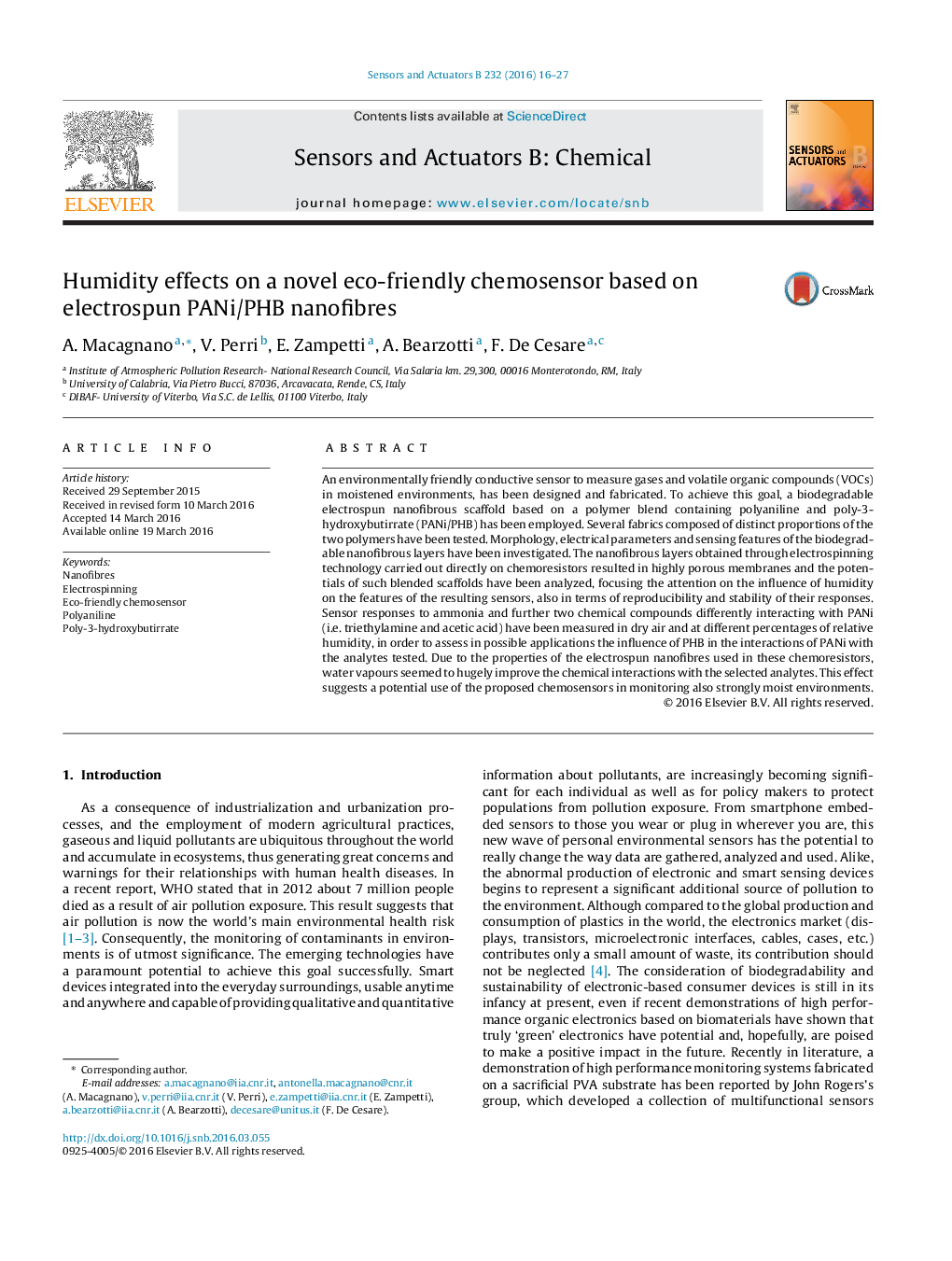| Article ID | Journal | Published Year | Pages | File Type |
|---|---|---|---|---|
| 7143507 | Sensors and Actuators B: Chemical | 2016 | 12 Pages |
Abstract
An environmentally friendly conductive sensor to measure gases and volatile organic compounds (VOCs) in moistened environments, has been designed and fabricated. To achieve this goal, a biodegradable electrospun nanofibrous scaffold based on a polymer blend containing polyaniline and poly-3-hydroxybutirrate (PANi/PHB) has been employed. Several fabrics composed of distinct proportions of the two polymers have been tested. Morphology, electrical parameters and sensing features of the biodegradable nanofibrous layers have been investigated. The nanofibrous layers obtained through electrospinning technology carried out directly on chemoresistors resulted in highly porous membranes and the potentials of such blended scaffolds have been analyzed, focusing the attention on the influence of humidity on the features of the resulting sensors, also in terms of reproducibility and stability of their responses. Sensor responses to ammonia and further two chemical compounds differently interacting with PANi (i.e. triethylamine and acetic acid) have been measured in dry air and at different percentages of relative humidity, in order to assess in possible applications the influence of PHB in the interactions of PANi with the analytes tested. Due to the properties of the electrospun nanofibres used in these chemoresistors, water vapours seemed to hugely improve the chemical interactions with the selected analytes. This effect suggests a potential use of the proposed chemosensors in monitoring also strongly moist environments.
Keywords
Related Topics
Physical Sciences and Engineering
Chemistry
Analytical Chemistry
Authors
A. Macagnano, V. Perri, E. Zampetti, A. Bearzotti, F. De Cesare,
